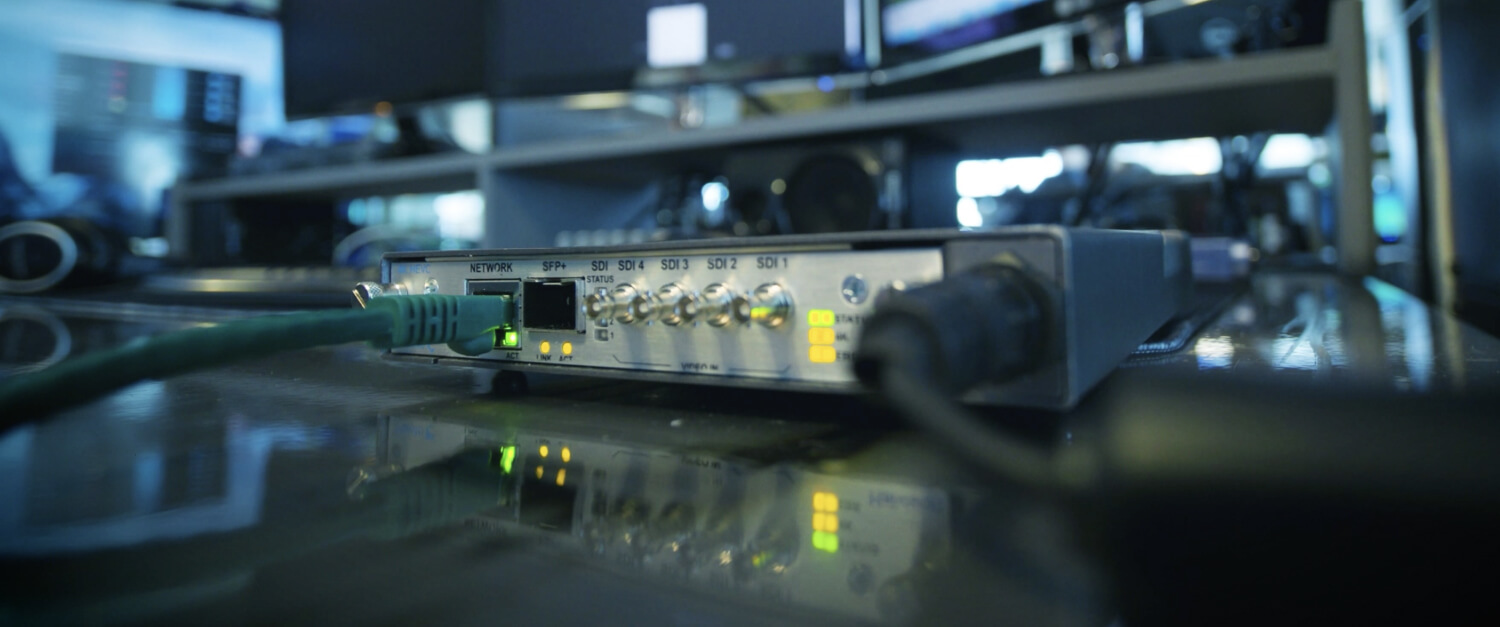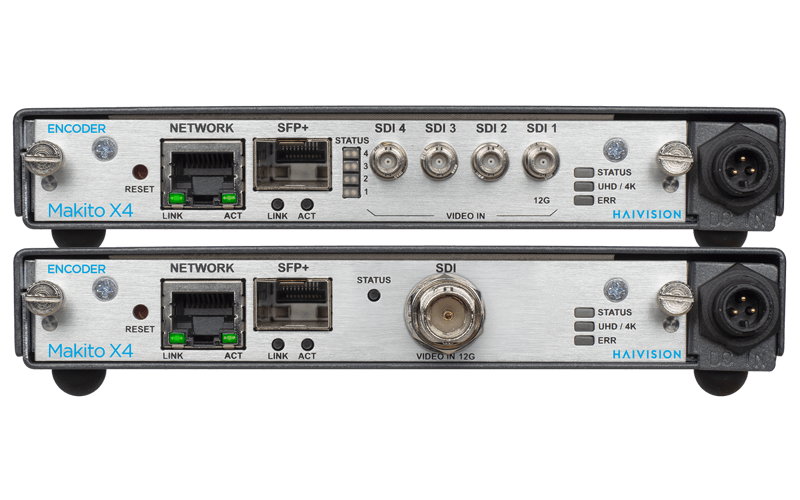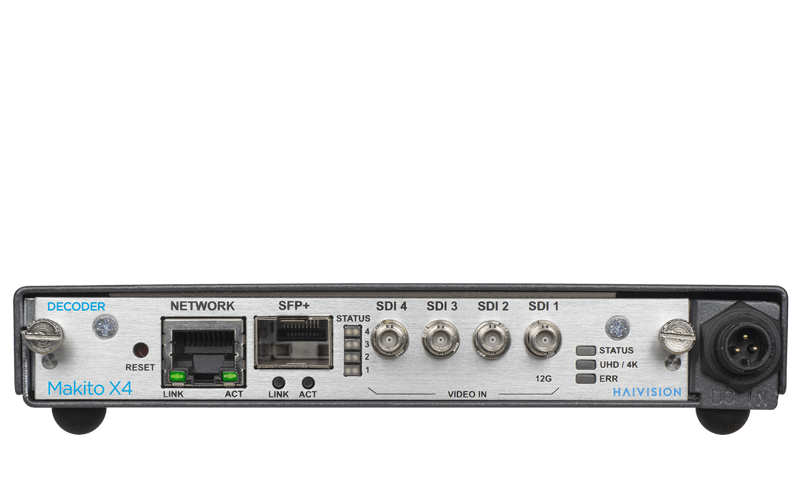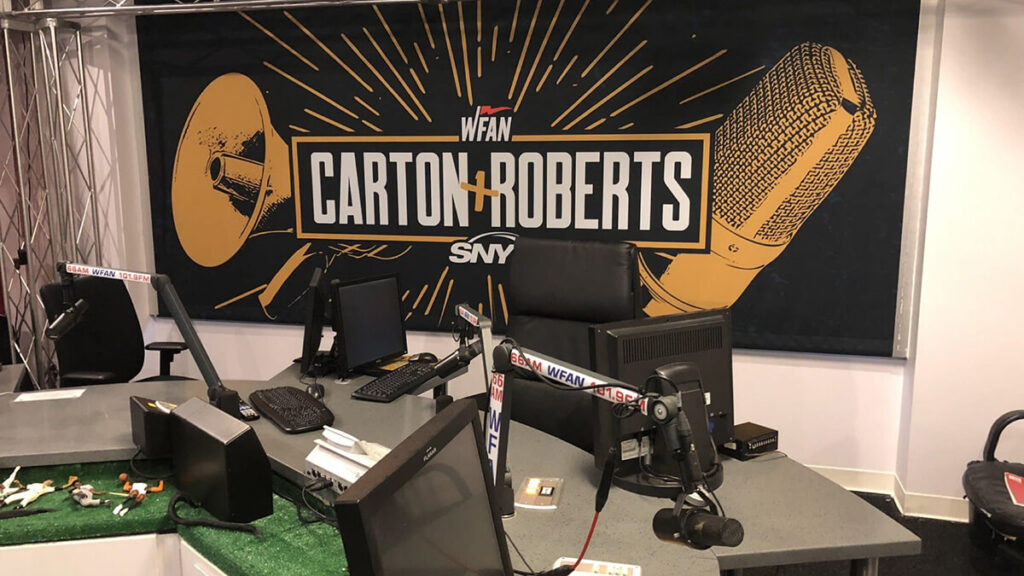Philadelphia Eagles
Haivision’s Ultra-Low Latency Technology Streamlines Philadelphia Eagles’ Remote Production Workflows
Philadelphia Eagles turned to the ultra-low latency Makito X4 video encoder and decoder pair to stream synchronized multi-camera live video feeds from remote venues back to their broadcast studio to produce unique and engaging pre-and post-game content for fans.
“No other company offers the compact form factor of the Makito X4 encoder, which allows us to simultaneously send streams from four cameras in sync back to our studio in 200 milliseconds. It’s been a total game-changer. We turned it on and immediately saw the benefits. Not only has the Makito X4 made our workflows easier and faster to set up, but it has also made our overall production look better.”
David Sullivan
Senior Broadcast & Media Engineer,
Philadelphia Eagles

The Challenge

Overcoming the Complexities of Away Game Production Workflows
On game day, the Philadelphia Eagles live stream content to audiences watching on YouTube and Facebook, as well as to their philadelphiaeagles.com website and its popular Eagles’ mobile app. Stream latency needs to be kept low in both directions so that two-way audio communications can be used between their production studio and remote video. When the team travels to away games, there are additional hurdles to overcome in order to achieve those latency numbers and give fans the feeling of being brought along with the team.
On-field, sideline, and end-zone cameras need to be set up, and there are logistics involved in managing frequencies and wiring in an unfamiliar stadium. Once the cameras are in place, video signals need to be synchronized and brought back at sub-second latency to their studio in Philadelphia. This used to mean transporting a large amount of broadcast gear in an 18 RU rack, as well as the planning and expenses involved when traveling with up to seven staff members needed to operate the equipment.
The Solution

Haivision Makito X4 Encoder-Decoder Pair Streamlines Remote Production Efforts
Looking to reduce the time, costs, and logistical complexity involved, the team started to evaluate solutions that would help the Eagles achieve their remote production goals within a much smaller and more portable form factor. The compact Makito X4 Encoder from Haivision was finally chosen as it could encode four HD video inputs simultaneously at very low latency while keeping the outgoing streams in sync.
The Result
Haivision Technology Delivers Immediate Benefits
The original plan for the Eagles was to travel to away games with their large 18 RU rack solution and use the Makito X4 as a backup unit and then slowly transition to making it their primary encoder. However, once they arrived at the first game, they didn’t even bother turning on their old rack full of gear and instead used the Makito X4 Encoder which worked immediately.
“An hour into the first day, we decided that the video encoded by the Makito looked better than with our previous solution, the timing was better stream to stream, and we didn’t have to do anything – there was no setup. We just turned it on and immediately saw the benefits. Not only has the Makito made our workflows easier and faster to set up, but it has also made our overall production look better.”
Using the Makito X4 Encoder, the Eagles have been able to reduce the number of staff that must travel to away games as everything can be managed remotely, providing significant time and cost efficiencies as well as peace of mind when it comes to reliability and ease of use.
“There have been several scenarios when we’ve sent a Makito out to the field with no engineer on site and we didn’t have to change any settings. We didn’t have to worry about adjusting the bandwidth, image quality, or latency, it just worked.”
With the benefits of remote production becoming more apparent, the plan is to leverage the security and reliability of the SRT protocol and transition to a public internet connection. Moving to a public internet connection from a leased International Private Line has the potential to drive further cost savings, and with the resilience of the SRT protocol, any problems with the public internet are easily mitigated.































